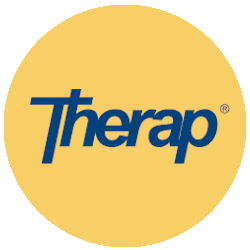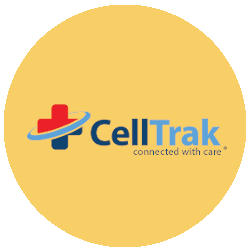What is EVV?
Electronic Visit Verification (EVV) program is used to track and verify the time and duration of visits of medical and caring personnel to people who receive assistance at home
What is EVV?
Electronic Visit Verification (EVV) is a mandate set by the US government in the 21st Century Cures Act intending to raise the homecare aid standards and reduce fraud in this area. EVV systems are used to keep track of the schedule and duration of visits of homecare personnel to their clients. Electronic Visit Verification software allows recording and validating of the exact time when the homecare worker started and ended providing help, as well as the place, date, and the type of services provided. This helps to avoid possible cases of fraud, abuse, and waste on the home healthcare workers’ part and makes sure that the person gets a decent standard of care
EVV challenges
The EVV system for home care is meant to protect people receiving medical care at home from fraud and misconduct from homecare personnel. On the other hand, with EVV the companies providing home care, hospice, and home health services get an effective tool to control their employees and contractors. However, many people receiving medical help at home are anxious about EVV because some EVV methods may limit their freedom and confidentiality. Many electronic verification systems require using cameras, GPS, and other obtrusive tracking methods to verify visits, which causes discomfort to people who receive help at home. A good way out in this situation is to use TOTP tokens
How Protectimus EVV System Works
Protectimus EVV solution is built on the basis of a time-based one-time passwords generation algorithm, it makes it possible to use hardware TOTP tokens to track the exact hours of visits to the patient’s household
The Protectimus EVV device is, in fact, a TOTP (time-based one-time password) hardware token. It generates temporary codes using the actual time as a variable. Thus, knowing the one-time passcode from the TOTP token and exploiting the properties of the time-based one-time password generation algorithm, we can determine the precise minute when it was created. It makes a TOTP hardware token a perfect EVV device, allowing us to track the exact duration and place of visits to the person receiving home care. At the same time, such an EVV device doesn’t violate the patient’s privacy (unlike cameras or GPS trackers) and helps avoid any concerns from people getting help at home
Step by step description of how the Protectimus EVV system works:

A patient gets their hardware TOTP token
The company that provides a homecare aid installs Protectimus EVV devices (OTP tokens looking like key fobs) in the patient's accommodations

Homecare worker gets the OTP when arrives
When a homecare employee arrives at the patient's place, they use the EVV device to get a temporary code and then write the received passcode down

Homecare worker gets the OTP when leaves
Upon completion of the homecare or healthcare services, the employee generates and writes down another one-time passcode

OTPs are transferred to the EVV system
At the end of the day or right after the visit, the homecare worker transfers the OTP codes together with the patient's ID to the EVV system

Protectimus verifies the OTP codes
The EVV system passes the one-time passwords to the Protectimus 2FA services and receives the precise time when the OTP codes were generated in return
Companies that choose Protestimus EVV Solution
Great clients use great software! See the list of a few companies that already use Protectimus EVV

CareVoyant
CareVoyant is an integrated enterprise-level software platform for Home Care Agencies that offers Cloud-based healthcare software for Home Care, Home Healthcare, and Home & Community-Based Services (HCBS).

Therap Services
Therap Services offers an integrated solution for documentation and communication needs of Home Care Agencies and DDD Agencies providing support to people with disabilities, especially developmental disabilities.

Public Partnerships
Public Partnership provides self-directed home care programs and software tools that make self-directed care easier for individuals with disabilities or chronic illnesses and aging adults eligible for public Medicaid assistance.

CellTrak
CellTrak is a leading provider of home care and community-based care documentation software solutions. It serves some of the largest providers of personal care services in support of their field staff workflow needs.

DDReports
DDReports offers comprehensive business management software as well as Electronic Visit Verification software for companies providing Developmental Disabilities Services (DDD Agencies) and Home Care Services.
Which type of EVV token device to choose?
Protectimus TWO - 6 digit EVV device
Hardware TOTP token Protectimus Two is a 6-digit one-time password generation device perfect for use with the Protectimus Electronic Visit Verification System. EVV tokens Protectimus Two are water-proof, protected against impact, and have a lifetime of over 5 years (the warranty period is 12 months). These EVV devices are available for orders from one piece. Please note, the lower the number of digits in a one-time passcode, the higher the possibility of repeating numerical values of one-time passcode within a certain period. For EVV, we recommend using 8-digit TOTP tokens with 60 seconds one-time codes lifetime
What is your choice?
You can choose either 6-digit or 8-digit hardware TOTP tokens for EVV compliance. We advise you to opt for 8 digit tokens for electronic visit verification to minimize the likelihood of repeating numerical values of temporary codes
Protectimus EVV - 8 digit EVV device
We recommend using 8-digit tokens for electronic visit verification to exclude the lowest risk of repeating numerical values of OTP codes within a certain period of time. Such an issue may take place if the EVV provider transfers the codes to the Protectimus EVV system at long intervals. And the only solution is using longer OTP passcodes. 8-digit TOTP tokens Protectimus EVV are designed specifically for this purpose. This EVV device is water-resistant and has a larger-sized 8-digit display. The Protectimus EVV tokens are available for order from 500 pieces. The battery life is about 5 years with a 1 year warranty
How to set up the Protectimus Electronic Visit Verification Software
You can use a cloud Protectimus EVV System or deploy the Electronic Visit Verification system on your corporate servers installing the Protectimus On-Premise Platform, we provide opened API for integration
Cloud service
To integrate the token-based time-tracking solution Protectimus EVV with your Electronic Visit Verification System, first thing, you need to register with the Protectimus cloud service or deploy the Protectimus auth platform on your premises, and then provide the integration via API. If the legislation of your state allows using cloud service, we recommend you to pursue this option. It is an easier, cheaper, and time-saving option as you don't need to invest in additional equipment and its protection. Note that your account in Protectimus cloud service can be configured in such a way as not to transfer any confidential data to Protectimus
On-premises platform
Protectimus electronic visit verification software can be installed on the territory of the EVV provider. Some of our clients have chosen this option because legal requirements oblige them to use only US-based or on-premise software. This requirement aims to avoid the possibility of the patients' data leaks. Our on-premise EVV software is easy to install and set up and it's enough to use just a few API methods to integrate the Protectimus EVV solution with your EVV system. But if there are any troubles, our technical support team will connect remotely and help you to deploy the platform and integrate Protectimus EVV with your software in real-time
Why Protectimus EVV
Hardware TOTP token is the most practical EVV device for tracking time and location of visits available on the market, it doesn’t violate the patient’s privacy and doesn’t require any special skills to use it
No fraud
It’s impossible to foresee or forge the one-time code from the Protectimus EVV token device. A home care worker will not be able to trick the EVV system in any way, thus the employer and state can be sure that people receiving healthcare services at home aren’t neglected and the homecare workers receive payment for the hours they actually worked
Respected privacy
Hardware TOTP token is the simplest possible EVV device. It doesn’t require extra effort to be installed in the patient’s home, no extra programs or software updates are required, and it doesn’t track any personal data. Using TOTP hardware tokens for electronic visit verification helps to avoid any concerns about the privacy of the patients receiving help at home
Easy customization
We always help our customers with the integration and setup of the Protectimus Electronic Visit Verification System. But there is more! If necessary, we can customize our EVV solution to meet any further requirements to the electronic visit verification systems. Just get in touch with our sales team, and we will find the solution to any issue

